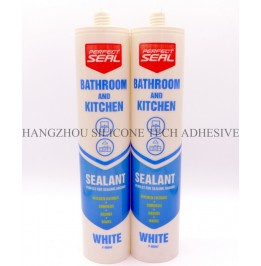Proper curing is essential for sealants to achieve optimal adhesion, flexibility, and durability. Subjecting freshly applied sealants to heavy loads prematurely can compromise structural integrity, leading to deformation, cracking, or bond failure. Understanding the critical timeframes for avoiding heavy loads ensures long-term performance and safety.

Most sealants form a surface skin within the first few hours after application, creating a temporary barrier against light contact. However, this skin does not indicate full curing. For example, silicone sealants develop a tack-free surface in 1–4 hours but remain soft beneath. Polyurethane sealants may skin over in 2–6 hours but lack sufficient internal strength to resist heavy loads. During this phase, even minor pressure from foot traffic can indent the sealant, while heavy machinery or stacked materials may cause permanent deformation.
Complete curing involves internal polymerization, where chemical bonds solidify throughout the sealant. This process varies by formulation: silicone sealants typically cure in 24–72 hours, polyurethane in 24–48 hours, and acrylic in 4–24 hours. Until full curing is achieved, the sealant’s modulus remains low, making it vulnerable to compression. Tests show that applying a 500 kg load within 12 hours of application can reduce adhesion strength by up to 40%, as the sealant cannot evenly distribute stress.
Curing rates depend heavily on environmental conditions. High temperatures accelerate solvent evaporation in acrylic sealants but may cause premature skinning, trapping moisture inside and weakening the bond. Conversely, low temperatures slow curing in silicone and polyurethane sealants, extending the vulnerability window. Humidity also plays a role: polyurethane sealants require moisture to cure, so dry environments (<40% RH) prolong curing, while high humidity (>80% RH) may cause bubbling in acrylics. Adjusting project timelines based on ambient conditions prevents early loading risks.
Proper ventilation aids curing by regulating temperature and humidity. In enclosed spaces, stagnant air can trap solvents in acrylic sealants, delaying hardening. Forced airflow from fans or HVAC systems accelerates curing but must be controlled to avoid dust contamination. In outdoor projects, wind can cool sealant surfaces, slowing skin formation. Monitoring airflow and adjusting curing times accordingly ensures consistent performance across environments.
Horizontal joints, such as floor or deck seals, bear direct compression from heavy loads. These areas require longer curing times (48–72 hours for silicone) before allowing foot traffic or equipment placement. Vertical joints, like wall or window seals, experience shear stress rather than compression, allowing slightly earlier loading (24–48 hours). However, dynamic vertical joints in high-rise buildings may need extended curing due to wind-induced vibrations.
The substrate material influences curing and load resistance. Porous substrates like concrete absorb moisture from polyurethane sealants, slowing curing but enhancing adhesion over time. Non-porous substrates like glass or metal require primers to accelerate bonding, reducing the waiting period. Dissimilar substrates (e.g., metal and concrete) may create uneven stress distribution, necessitating longer curing before loading to prevent bond failure at the interface.
Manufacturers provide baseline curing times, but real-world conditions often require adjustments. For instance, a silicone sealant labeled “24-hour curing” may need 48 hours in cold climates. Contractors should conduct adhesion tests (e.g., pull-off tests) before loading, even if the manufacturer’s time has elapsed. Adding a 25–50% safety margin accounts for variables like substrate cleanliness, application thickness, and environmental extremes.
Premature loading reduces a sealant’s lifespan by up to 60% in some cases. Cracks or voids caused by early compression allow moisture ingress, accelerating degradation. For critical infrastructure like bridges or industrial facilities, adhering to extended curing periods minimizes maintenance costs and ensures compliance with safety regulations. Documenting curing times and load restrictions in project specifications provides accountability and quality control.
By respecting these critical timeframes, contractors and engineers can avoid costly rework and ensure sealants perform as designed throughout their service life.
Copyright 2019 by Hangzhou Silicone Tech Adhesive Co., Ltd. All rights reserved.
Bathroom Sealant | Acrylic Sealant | Dow Corning 795 | Aquarium Sealant | Dow Corning 732 | Clear Silicone Sealant | Polysulfide Sealant | Glazing Sealant | Mirror Sealant | IG Sealant
Powered by Onepound